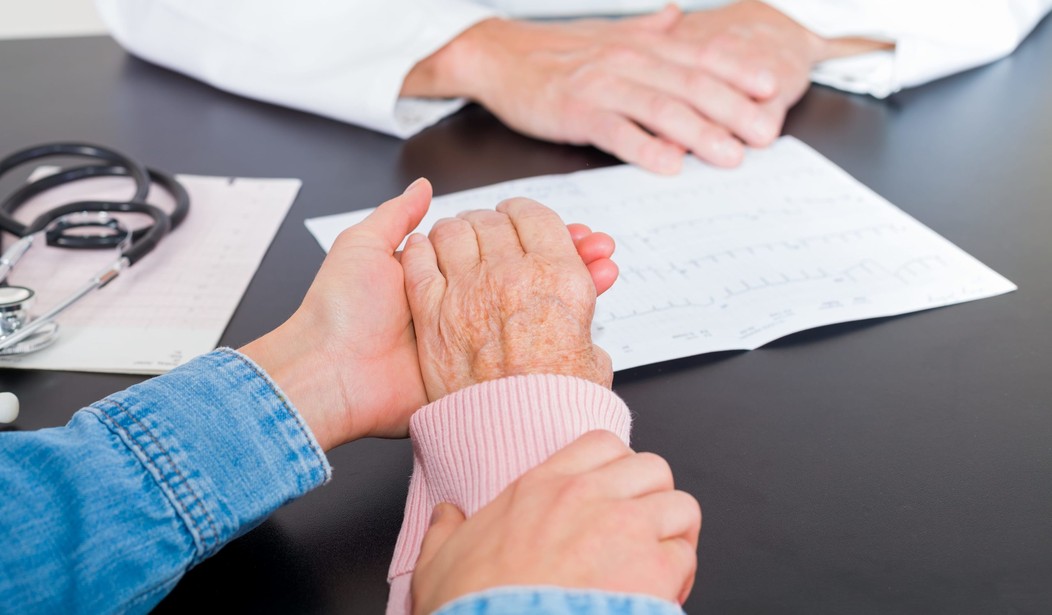“Seems I have lung cancer,” John Stossel recently wrote from his hospital bed.
He claims the medical care he is receiving is great. However, he has some real complaints about the customer service. I couldn’t help but be curious if his satisfaction is due to the fact that his doctors are assuring him that he will be fine. Combine that prognosis with the lousy customer service and you get a completely different picture of the “business” of cancer care.
On Christmas Eve we learned that my mother had small-cell carcinoma. We also learned that this type of cancer is very aggressive. Given the fact that the biopsy alone collapsed her lung, surgery was not an option for her.
Her doctor, at first, was also extremely optimistic. The spot on her lung was small, he said. Her radiation doctor was also pleasantly upbeat. Four full rounds of chemo. Radiation five days a week, for six weeks. This would mean an hour travel time each way. Her cancer, they both said, was “treatable.”
The radiation doctor explained how treating my mother’s type of cancer was most gratifying for her and her staff. The doctor explained that she would be able to actually see the tumor melt away. However, just a few minutes later in the conversation she also mentioned, rather matter-of-factly, that in 80 percent of patients their cancer returns, not in their lungs, but in their brains.
It was then that I noticed these doctors were not using words like “cure.” Instead, they used words like “treatable” and “goal.” They offered to treat her with chemo and radiation, with the goal of doubling her life expectancy from 6-9 months to 12- 18 months.
When my mother told the doctor she didn’t think she could survive such an aggressive treatment, he told her she would die within the year. As he tried to convince her to undergo the treatment, I couldn’t help but wonder if he could actually see the 5 foot 7 inch, 88-year-old woman before him, weighing 96 pounds fully dressed in winter clothes.
Late March she began to cough.
Within three days she couldn’t catch her breath after coughing. She couldn’t talk without throwing herself into a coughing fit.
It was pneumonia. Her first three days in the hospital were a nightmare. She didn’t see a doctor until the second day. The doctor was not her specialist. She was a young “hospitalist” who assured my mother she would be fine in just a few days. Every day she would feel a little better. I wasn’t sure if she was lying, incompetent, or she couldn’t see the frail woman suffering in front of her, either.
One night she began to cough uncontrollably. She couldn’t breathe. She was frightened and in pain. I called the nurse. Two came in the room. One waltzed over to the monitor attached to the wall and booted it up; the other wrapped the blood pressure cuff around my mother’s arm as she was gasping for air. No calming words. No assurances. Just the tasks at hand.
“She’ll be fine,” they told me. “Her oxygen level is good.”
As she deteriorated before my eyes, again I wondered, “Can they even see her?”
John Stossel wrote:
Customer service is sclerotic because hospitals are largely socialist bureaucracies. Instead of answering to consumers, which forces businesses to be nimble, hospitals report to government, lawyers and insurance companies.
Whenever there’s a mistake, politicians impose new rules: the Health Insurance Portability and Accountability Act paperwork, patient rights regulations, new layers of bureaucracy…
I dared not leave my mother. Just as Stossel described, alarms sounded for hours unanswered.
Four days into her stay, the on-call oncologist entered her room. He told her the hardest news anyone can hear. It was the lung cancer giving her pneumonia. Nothing could be done. Her only options were to go home with 24-hour care, or to a nursing home. Her prognosis was three months. He was the first doctor to tell her she was never a candidate for chemo and radiation.
She got tears in her eyes, thanked and hugged him. He was the first one to actually see her as a person instead of a protocol. She died twelve days later.
From the day he sent her home, her suffering eased tremendously. Her care, at last in hospice, centered around her needs and comfort. No one fed us hope in place of compassion, and we were finally free from the grip of the business of cancer.









Join the conversation as a VIP Member